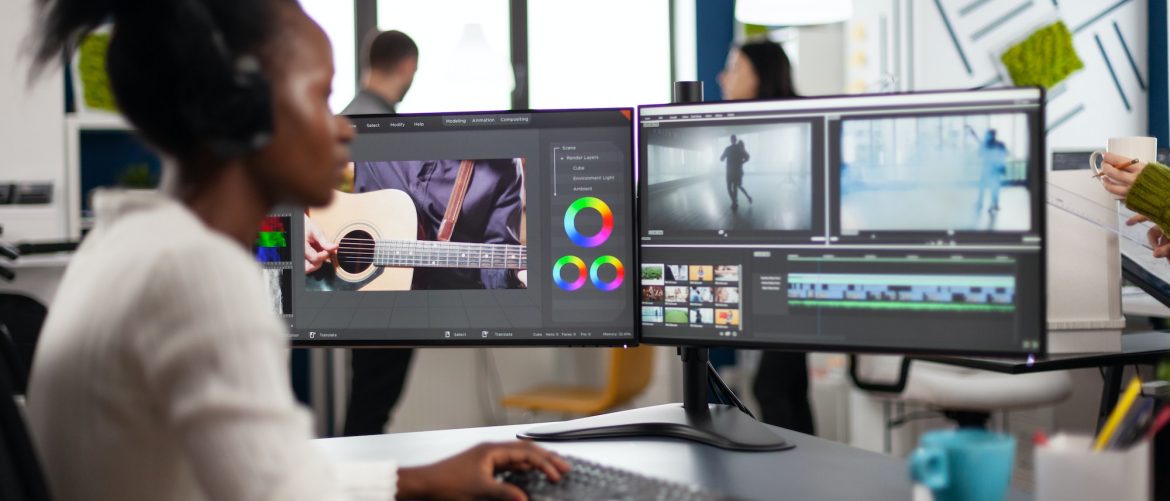Mastering On-Page SEO: A 2024 Guide
The 2024 guide to mastering on-page SEO focuses on optimizing individual web pages to improve search engine rankings. Key elements include keyword optimization, meta tags, header tags, content quality, and user experience. Staying updated with the latest SEO trends and algorithm changes ensures effective on-page strategies and enhanced visibility.
On-page SEO remains a cornerstone of effective search engine optimization. As search engines evolve and user expectations shift, mastering on-page SEO is crucial for maintaining and improving your website's visibility and ranking. This 2024 guide provides up-to-date strategies and best practices to optimize your web pages and achieve higher search engine rankings.
What is On-Page SEO?
On-page SEO refers to the practice of optimizing individual web pages to rank higher and earn more relevant traffic in search engines. It involves making adjustments to various elements of your web pages, including content, HTML tags, and user experience factors, to improve their relevance and performance.
On-Page SEO
- Improves Relevance: Helps search engines understand the content and context of your pages.
- Enhances User Experience: Provides a better user experience by ensuring that pages load quickly and are easy to navigate.
- Increases Rankings: Optimized pages are more likely to rank higher in search engine results pages (SERPs).
Key On-Page SEO Elements
Title Tags
Title tags are HTML elements that specify the title of a web page. They appear in search results and browser tabs.
- Best Practices:
- Include Primary Keywords: Incorporate relevant keywords naturally.
- Keep It Concise: Aim for 50-60 characters to ensure the title is fully displayed in search results.
- Make It Compelling: Create a title that encourages users to click through to your page.
Meta Descriptions
Meta descriptions provide a brief summary of a page's content and appear below the title in search results.
- Best Practices:
- Incorporate Keywords: Use relevant keywords to improve visibility.
- Keep It Under 160 Characters: Ensure the description is concise and fits within search results.
- Write Persuasively: Craft a description that entices users to click on your link.
Header Tags (H1, H2, H3, etc.)
Header tags help structure content and make it easier for both users and search engines to understand the hierarchy of information.
- Best Practices:
- Use One H1 Tag: The H1 tag should contain the main topic of the page and include primary keywords.
- Use H2 and H3 Tags: Organize content with H2 and H3 tags to break down sections and sub-sections.
- Be Descriptive: Ensure headers are descriptive and relevant to the content they precede.
URL Structure
A clean and descriptive URL structure helps search engines and users understand the content of a page.
- Best Practices:
- Include Keywords: Use relevant keywords in URLs to improve relevance.
- Keep It Short and Simple: Avoid lengthy or complex URLs.
- Use Hyphens: Separate words with hyphens rather than underscores.
Content Optimization
High-quality content is essential for on-page SEO. It should be informative, engaging, and relevant to your target audience.
- Best Practices:
- Include Primary and Secondary Keywords: Use keywords naturally throughout the content.
- Maintain Readability: Write in a clear, concise, and engaging manner.
- Use Multimedia: Incorporate images, videos, and infographics to enhance the content.
Internal Linking
Internal linking helps distribute page authority and improves site navigation.
- Best Practices:
- Link to Relevant Pages: Use descriptive anchor text to link to other pages on your site.
- Avoid Over-Linking: Use internal links judiciously to avoid clutter and confusion.
- Create a Logical Structure: Ensure links lead to relevant and helpful content.
Image Optimization
Images enhance user experience but can also impact page load speed if not optimized properly.
- Best Practices:
- Use Descriptive File Names: Name images with relevant keywords.
- Add Alt Text: Provide descriptive alt text for accessibility and SEO.
- Optimize File Size: Compress images to improve loading times without sacrificing quality.
Mobile Optimization
With the increasing use of mobile devices, ensuring your site is mobile-friendly is crucial for on-page SEO.
- Best Practices:
- Use Responsive Design: Ensure your site adjusts to different screen sizes and devices.
- Optimize Load Speed: Improve mobile page load times for a better user experience.
- Test Mobile Usability: Regularly check mobile usability to identify and fix issues.
Page Speed
Page speed affects both user experience and search engine rankings.
- Best Practices:
- Optimize Images and Scripts: Compress files and minimize code to reduce loading times.
- Use Caching: Implement browser caching to speed up page load times.
- Monitor Performance: Regularly test page speed and make necessary improvements.
Schema Markup
Schema markup is a type of structured data that helps search engines understand the content of your pages.
- Best Practices:
- Implement Relevant Schema: Use schema markup for products, reviews, events, and other relevant content.
- Test Your Markup: Use tools like Google’s Structured Data Testing Tool to ensure markup is correctly implemented.
- Stay Updated: Keep up with schema changes and updates to ensure accuracy.
Common On-Page SEO Mistakes to Avoid
Keyword Stuffing
Overusing keywords can negatively impact readability and user experience. Use keywords naturally and sparingly.
Ignoring Meta Tags
Neglecting meta tags, such as title tags and meta descriptions, can reduce click-through rates and visibility.
Duplicate Content
Avoid duplicating content across multiple pages. Use canonical tags to manage duplicate content issues.
Neglecting Mobile Optimization
Failing to optimize for mobile can result in poor user experience and lower rankings on mobile searches.
Ignoring User Experience
Ensure that your site is easy to navigate and provides a positive user experience. A poor user experience can impact bounce rates and rankings.
Monitoring and Measuring On-Page SEO Success
Use Analytics Tools
Track performance metrics such as traffic, bounce rates, and conversions using tools like Google Analytics.
Monitor Rankings
Regularly check your rankings for target keywords to assess the effectiveness of your on-page SEO efforts.
Analyze User Behavior
Use tools like heatmaps and session recordings to understand how users interact with your site and identify areas for improvement.
Conduct SEO Audits
Perform regular SEO audits to evaluate on-page elements and identify opportunities for optimization.
Mastering on-page SEO in 2024 involves a comprehensive approach to optimizing various elements of your web pages. By focusing on title tags, meta descriptions, content quality, URL structure, and other key factors, you can improve your site’s visibility, user experience, and search engine rankings. Stay up-to-date with SEO best practices and continuously monitor and adjust your strategies to achieve long-term success.
FAQs: Mastering On-Page SEO
1. What is on-page SEO?
On-page SEO refers to the optimization of individual web pages to improve their search engine rankings and attract more relevant traffic. This includes optimizing various elements on the page, such as title tags, meta descriptions, headers, content, and URL structure.
2. Why is on-page SEO important?
On-page SEO is crucial because it helps search engines understand the content and context of your pages, improves user experience, and enhances your site’s visibility in search engine results. Proper on-page optimization can lead to higher rankings, increased traffic, and better user engagement.
3. How do I optimize my title tags for SEO?
To optimize title tags:
- Include Primary Keywords: Incorporate relevant keywords naturally.
- Keep It Concise: Aim for 50-60 characters to ensure full display in search results.
- Make It Engaging: Craft a compelling title that encourages clicks.
4. What should I include in a meta description?
A meta description should:
- Include Keywords: Use relevant keywords to improve search visibility.
- Be Under 160 Characters: Ensure it fits within the search results snippet.
- Be Persuasive: Write a description that entices users to click through to your page.
5. How do header tags impact SEO?
Header tags (H1, H2, H3, etc.) help organize and structure content on a page. They make it easier for search engines and users to understand the hierarchy and relevance of the content. Use H1 for the main title, and H2 and H3 for sub-sections.
6. What is a good URL structure for SEO?
A good URL structure should:
- Include Keywords: Use relevant keywords in the URL.
- Be Short and Simple: Avoid long or complex URLs.
- Use Hyphens: Separate words with hyphens rather than underscores.
7. How can I optimize my content for SEO?
To optimize content:
- Include Keywords: Use primary and secondary keywords naturally.
- Ensure Readability: Write in a clear, engaging, and easy-to-understand manner.
- Use Multimedia: Enhance content with images, videos, and infographics.
8. What are internal links, and why are they important?
Internal links are hyperlinks that connect different pages within the same website. They are important for:
- Distributing Page Authority: Helps distribute link equity throughout your site.
- Improving Navigation: Enhances site navigation and user experience.
- Boosting SEO: Helps search engines crawl and index pages more effectively.
9. How do I optimize images for SEO?
To optimize images:
- Use Descriptive File Names: Name images with relevant keywords.
- Add Alt Text: Provide descriptive alt text for accessibility and SEO.
- Optimize File Size: Compress images to improve loading times.
10. Why is mobile optimization important for SEO?
Mobile optimization is essential because a significant portion of web traffic comes from mobile devices. A mobile-friendly site improves user experience, load times, and search engine rankings, particularly for mobile search queries.
11. How can I improve page speed?
To improve page speed:
- Optimize Images and Scripts: Compress files and minimize code.
- Use Caching: Implement browser caching to speed up load times.
- Monitor Performance: Regularly test and optimize page speed.
12. What is schema markup, and how does it help with SEO?
Schema markup is a type of structured data that helps search engines understand the content of your pages. It can enhance search results with rich snippets, such as reviews, ratings, and events, which can improve visibility and click-through rates.
13. How often should I review and update my on-page SEO?
Regularly review and update your on-page SEO, especially after making changes to your site’s structure or content. Conduct periodic SEO audits to ensure that all elements are optimized and up-to-date.
14. What are common mistakes to avoid in on-page SEO?
Common mistakes include:
- Keyword Stuffing: Overusing keywords in content and meta tags.
- Neglecting Meta Tags: Ignoring title tags and meta descriptions.
- Duplicate Content: Having similar or identical content across multiple pages.
- Ignoring Mobile Optimization: Failing to optimize for mobile devices.
Get in Touch
Website – https://www.webinfomatrix.com
Mobile - +91 9212306116
Whatsapp – https://call.whatsapp.com/voice/9rqVJyqSNMhpdFkKPZGYKj
Skype – shalabh.mishra
Telegram – shalabhmishra
Email - info@webinfomatrix.com
What's Your Reaction?













